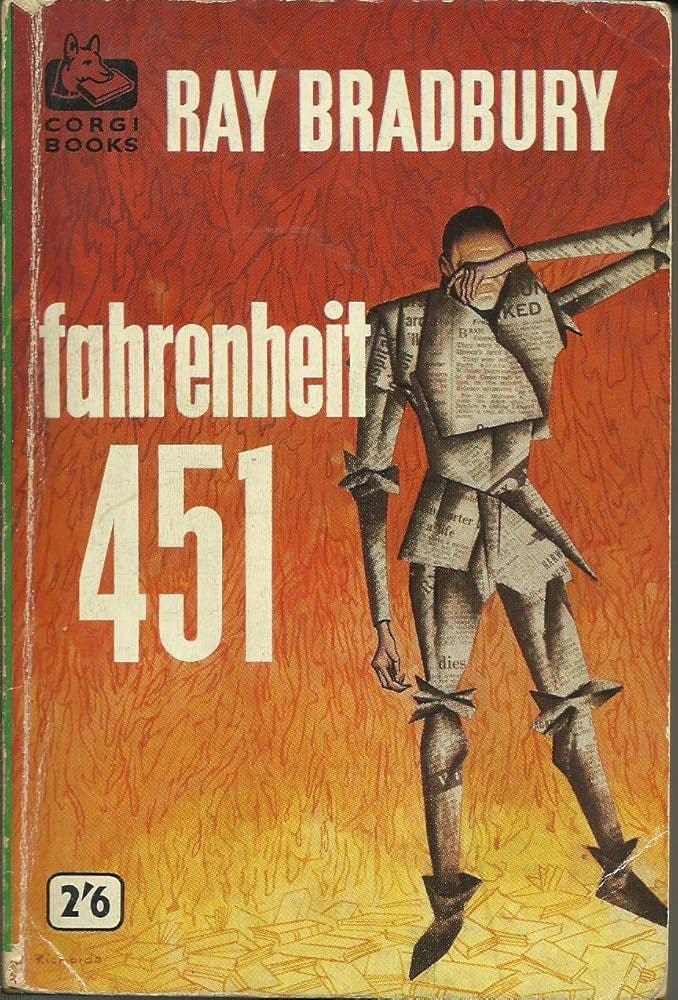In an age where we are more connected than ever and constantly juggling our busy lives, it’s important to remember: bigger isn’t always better, especially in the world of literature.
When you think of a novel—a serious, classic novel—what comes to mind? Chances are, it’s a 300+ page doorstop of a book. But the truth is, the long novel is more of a modern anomaly. When the novel form emerged—often traced back to the 17th and 18th centuries with works like Don Quixote by Miguel de Cervantes—novels varied greatly in length. Sure, you had hefty works like Tom Jones, and the Victorian era produced its fair share of long narratives, but these were often serialized, making them more digestible for readers.
By the turn of the 20th century, many great works of literature were shorter and far more manageable. Take The Great Gatsby, for example—it’s under 200 pages. Ray Bradbury’s Fahrenheit 451 also typically comes in under 200 pages; it’s concise enough that I managed to finish it during a long walk. John Steinbeck’s Of Mice and Men is only 144 pages, and Zora Neale Hurston’s Their Eyes Were Watching God is about 250—on the longer side, sure, but still far shorter than many novels filling bookstore shelves today.
The lengthy novel, particularly those surpassing 500 pages, really solidified its place in the late 20th century. Advances in printing technology played a crucial role. According to Britannica, improvements such as photocomposition and offset printing allowed for faster production and kept costs lower, making it economical to print large quantities of books, even longer ones. As publishers sought to maximize profits, the idea emerged that bigger novels could justify higher prices. Consequently, length became associated with “serious” literature.
Genre fiction also played a role in this trend. Look, I love Stephen King and have been a “constant reader” for most of my life, but it’s no secret that as his popularity grew, so did the size of his books. In my opinion, this can partly be attributed to his publishers, who saw little need to enforce tighter editing. Take The Stand, for example. King initially had to cut nearly 400 pages from his original 1974 submitted manuscript to meet a price point that his publisher deemed acceptable. However, in 1990, he released the Complete & Uncut Edition, restoring those pages. While some fans appreciated the additional content, I prefer the tighter, original version from 1978. Sometimes, constraints force a more focused and powerful narrative.
This is why I’ve become a strong advocate for the novella and novelette formats. These are longer than short stories but shorter than traditional novels. A novella typically falls between 15,000 and 50,000 words (around 80 to 200 pages), while a novelette is even shorter, usually between 7,500 and 20,000 words (30 to 80 pages).
Many publishers seem to believe that there isn’t a market for these shorter forms, and some readers might assume that compelling stories can’t be told in such a brief span. However, the examples mentioned earlier—some of the greatest American novels—fall within today’s novella range. There’s clearly room for impactful storytelling in this format.
I believe it’s high time we, as readers, push for more novellas. Fortunately, if you’re a fan of the horror genre, there’s already a shift toward shorter fiction with works that pack a punch. For example, I recently read Rest Stop by Nat Cassidy, released by Shortwave Media. Set in mid-2016, the story follows Abe, a young musician traveling home to visit his ailing grandmother. After stopping for gas in the early morning hours, Abe encounters a mysterious van with the vanity plate “Cr8 H8” and soon finds himself trapped in an eerie rest stop bathroom. The story spirals into a nightmare, blending the vibes of Green Room and Terrifier into a tight, 160-page read. I devoured it in one sitting during a doctor’s appointment. Publishers, take note: not every book needs to be a massive tome; sometimes, all we want is a quick adrenaline rush. Rest Stop delivers just that.
Here are some other novellas and novelettes that showcase the power of shorter fiction:
The Invention of Morel by Adolfo Bioy Casares (120 pages): This is a fantastic piece of science fiction that partly inspired ABC’s 2000s hit show Lost.
Train Dreams by Denis Johnson (116 pages): As Lithub describes it, this is “an American epic in miniature.”
Such Small Hands by Andrés Barba, translated by Lisa Dillman (94 pages): A gripping, claustrophobic read that’s easily finished in one sitting.
The Ballad of Black Tom by Victor LaValle (160 pages): A modern retelling of H.P. Lovecraft’s The Horror at Red Hook, brought to life by the Shirley Jackson award-winning Black author Victor LaValle.
Mapping the Interior by Stephen Graham Jones (131 pages): A haunting meditation on grief that also delivers a gripping creature feature.
Novellas and novelettes have the power to deliver compelling stories without overstaying their welcome. It’s time to celebrate them and encourage publishers to produce more of these tightly crafted narratives.







Completely agree about the novella and short novel format.